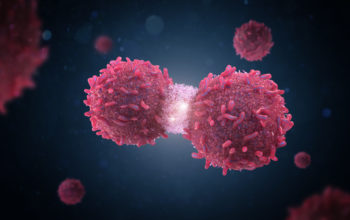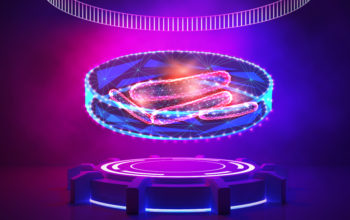
Date: 5th October 2020
Central nervous system (CNS) disorders arise from dysfunctions in brain networks and despite significant advancements in our understanding of CNS function and pathologies, translating this knowledge into therapeutic approaches has been hampered by the inability to selectively manipulate discrete circuits within the brain. Now scientists have engineered ultrasound-controllable drug carriers that are dependent on ultrasound for both targeting and uncaging allowing focal delivery of drugs.
The most common method of treating CNS disorders is systemic administration of small molecules. However, this can often cause significant off-target effects as the receptor-binding sites targeted by most drugs are expressed in other regions of the brain, and also in other tissues. To address this challenge, a team of scientists from the Switzerland Neuroscience Center, have developed a unique spatially-targeted and molecularly-specific drug delivery technology by using novel focused ultrasound (FUS) sequences and ultrasound-sensitive drug carriers.
The team used drug-encapsulated liposomes tethered to ultrasound-sensitive microbubbles (with perfluorocarbon gas core) hypothesising they could use a novel two-component Aggregation and Uncaging Focused Ultrasound Sequence (AU-FUS) at the desired targets inside the brain.
They built a custom in vitro setup which consisted of a microdialysis channel embedded in agarose to test the aggregation of the microbubbles and release of payload in response to the ultrasound. After several rounds of optimisation of the AU-FUS sequences, the team achieved a primary US component that was able to trap and aggregate the Ultrasound-Controlled drug carriers (UC-carriers), and the second wave that uncaged the microbubbles releasing the drug payload.
The system was then tested in vivo in mouse brains, by injecting the UC-carriers into the tail vein, and with further optimisation the team identified a novel in vivo AU-FUS sequence that was able to deliver small molecules with high efficiency while also avoiding blood-brain barrier (BBB) damage. As opening or damaging the BBB can be accompanied by inflammation and cellular damage, it was crucial this did not occur.
Next, the team wanted to manipulate a specific cortical network without opening the BBB. They chose to mechanically deflect the contralateral whiskers of the mouse which when evoked propagates activity throughout a known network of regions in the brain. They loaded the UC-carriers with muscimol, an agonist of ionotropic GABAA receptors, the major receptor responsible for fast inhibitory transmission in the brain. They targeted the microbubbles to one specific region of the brain with the AU-FUS, the vibrissa sensory cortex (vS1, and measured the whisker-evoked potentials (wEPs) in a different region of the brain. The AU-FUS-mediated inhibition of vS1 strongly reduced the amplitudes of wEPs by ~56%, and took ~50 mins on average to return to baseline activity.

Further investigations suggested that AU-FUS drug delivery was highly localised and that the observed neuromodulations were not due to the spreading of drug after uncaging. Focal delivery should allow a decrease in amount of drug required to inactive the brain compared to systemic administration. Indeed, this was the case and the team saw a comparable reduction of wEPs after systemically administering at least 1300 times more of muscimol than in the measured payload of the UC-carriers. They also determined that BBB integrity was maintained, and that the US also only increased the brain temperature by a tiny amounts lending support to its safety.
Conclusion and future applications
The team here have demonstrated a novel technique that allows efficacious and non-invasive modulation of specific brain circuits by spatially targeted delivery of receptor-specific small molecules. The system traps and aggregates US-carriers injected into the circulation, then allows the uncaging of drugs using minimal ultrasound energies to induce significant physiological responses but avoiding damage to the BBB.
The ability to target drugs specifically to the pathological brain regions may offer a strategic path towards treatment of many CNS disorders. The team are hoping that as the individual chemical and ultrasound components of the methodology are already FDA approved, it might enable rapid repurposing of many existing or late-stage drugs. It could also open up a new route for small molecules that have failed clinical translation due to toxicity or lack of efficacy – as the system enables targeting of specific brain regions, it can deliver drugs at higher focal concentrations than systemic administration allows.
The scientists are currently testing the effectiveness of their system in animal models of mental illness, for neurological disorders and to target lethal brain tumours that are surgically inaccessible. Once its effectiveness and safety has been determined in animals it is hoped that the method will be translated into clinical applications that can alleviate suffering in humans.
Therapeutic microbubbles are starting to become an interesting proposition for disease treatment. We reported just last week the use of therapeutic microbubbles for treating cancer. However, instead of using a dual-ultrasound approach the researchers had employed a tumour marker targeting strategy combined with ultrasound-triggered drug release microbubbles to selectively deliver a highly toxic drug to tumour cells in mice. It will be interesting to see whether other areas of the body can be treated with AU-FUS microbubbles which would alleviate the demand for tumour specific markers which can be a major challenge.
For more information please see the press release from ETH Zurich
Ozdas, M. S., A. S. Shah, P. M. Johnson, N. Patel, M. Marks, T. B. Yasar, U. Stalder, L. Bigler, W. von der Behrens, S. R. Sirsi and M. F. Yanik (2020). “Non-invasive molecularly-specific millimeter-resolution manipulation of brain circuits by ultrasound-mediated aggregation and uncaging of drug carriers.” Nature Communications 11(1): 4929.
https://doi.org/10.1038/s41467-020-18059-7


